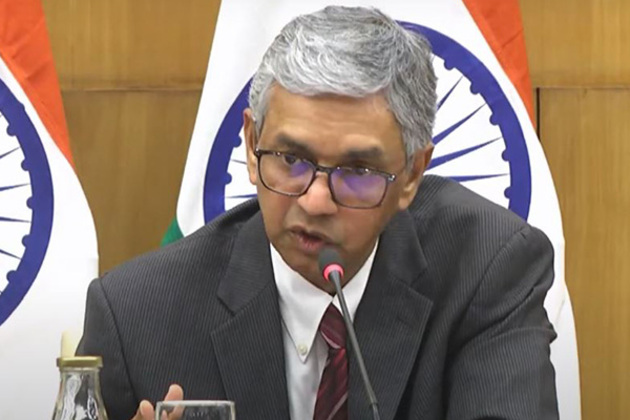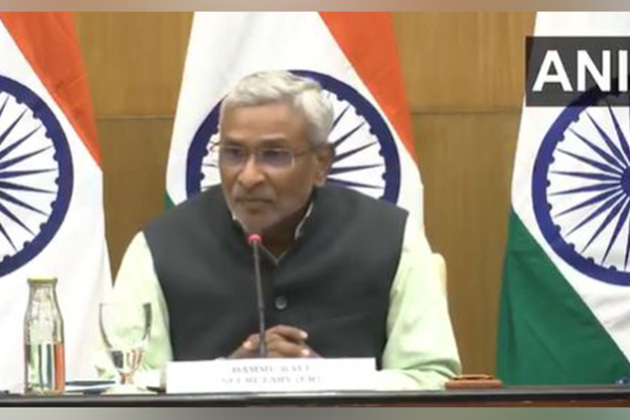Solar weather has real, material effects on Earth
The Conversation
11 Jul 2019, 03:59 GMT+10

On Sep. 1, 1859, solar astronomer Richard Carrington witnessed sunspots that suddenly and briefly flashed brightly before they disappeared. Just before dawn the next day, auroras erupted over most of the Earth, reaching as far south as the Caribbean and Hawaii while southern lights were seen as far north as Chile. The event produced not only a visible light show in areas where they do not typically appear, but it also sent telegraph systems around the world haywire.
Given the state of technology during Carrington's time, the impact of a geomagnetic storm was limited to disruptions of telegraph service. If something similar happened today, the world's technological infrastructure could grind to a halt. Extreme space weather events such as geomagnetic storms are more disruptive now than in the past. This is because of our greater dependence on technical systems that can be affected by electric currents and energetic particles high in the Earth's atmosphere.
The space weather threat
We might think of space as a silent, empty void and the sun as only a distant source of light and heat. This is not necessarily true. The sun and the Earth are connected in more complex, intimate and sometimes dangerous ways.
Read more: The scorching winds on the surface of the sun - and how we're forecasting them
Sunspots are temporary phenomena on the sun's photosphere that appear darker than the surrounding areas. Sunspots can change continuously and may last for only a few hours to days; or even months for the more intense groups. The total number of sunspots has long been known to vary with an approximately 11-year repetition known as the solar cycle. The peak of sunspot activity is known as solar maximum and the lull is known as solar minimum.
Indicating intense magnetic activity, sunspots accompany secondary phenomena such as bursts of electromagnetic radiation (flares) and coronal mass ejections (CME) - which are sudden eruptions of material - accompanied by solar energetic particles (SEPs). A solar flare is a sudden release of energy from the sun, while a CME shoots hot plasma from the sun into space.
The precise mechanisms that trigger flares and CMEs are still being debated, but the bigger the group of sunspots, the more intense solar activity tends to be. The sun continually ejects high-energy electrons, protons and other nuclei that bombard the Earth. Solar flares and CMEs send enormous amounts of energy and charged particles hurtling into collision with the Earth's upper atmosphere, where they can cause geomagnetic storms.
Charged particles during geomagnetic storms cause disturbances in the Earth's magnetic field, generating effects on electrical systems. Geomagnetic storms produce numerous effects such as voltage disruptions leading to power outages; changes in soil voltage that enhance corrosion in oil pipelines; disruption in satellite, radio and cellular communications networks; exposure to elevated levels of radiation; and reductions in flights with polar routes.
For the most part, the Earth's magnetic field protects humans from the barrage of radiation which comes from the sun. However, the Earth's magnetic field is weaker at either pole and therefore some particles of enter the Earth's atmosphere through geomagnetic storms.
Solar weather effects
The adverse economic impacts of solar activity on the North American power grid have been well-documented. For instance, four per cent of the power disturbances between 1992 and 2010 reported to the U.S. Department of Energy are attributable to strong geomagnetic activity.
I have been working on the economic effects of climate change for some time now and thought: "How about the sun?"
Interestingly, while the study of space weather is a rapidly growing field, academic work to assess its overall social and economic impacts appears to be in its infancy.
I am currently working with one of my former graduate students, Zichun Zhao, on the economic impacts of space weather. Our proxy measure of solar activity is the number of sunspots produced by the sun at a given time and, luckily, this data is publicly available.
In our empirical analysis, we found that the Gross Domestic Products (GDP) of the 34-member countries of the Organization for Economic Co-operation and Development decreases as solar activity increases. On average, GDP decreases by at least 0.06 per cent for every increase of one per cent in solar activity.
Read more: How space weather poses a risk to the finance industry
We find that the negative economic effects of geomagnetic storms are more significant in northern latitudes. However, the effects of geomagnetic storms are not restricted to high latitudes and have been documented in the United Kingdom, Finland, Sweden, Spain, the U.S., Canada, South Africa, Japan, China and Brazil.
Our empirical results indicate that damages caused by geomagnetic storms are much greater in the information and communications sectors.
Author: Michael Batu - Assistant Professor, Department of Economics, University of Windsor 
 Share
Share
 Tweet
Tweet
 Share
Share
 Flip
Flip
 Email
Email
Watch latest videos
Subscribe and Follow
Get a daily dose of Caribbean Herald news through our daily email, its complimentary and keeps you fully up to date with world and business news as well.
News RELEASES
Publish news of your business, community or sports group, personnel appointments, major event and more by submitting a news release to Caribbean Herald.
More InformationBusiness
SectionWall Street extends rally, Standard and Poor's 500 hits new high
NEW YORK, New York - U.S. stock markets closed firmly in positive territory to start the week Monday, with the S&P 500 and Dow Jones...
Canadian tax on US tech giants dropped after Trump fury
WASHINGTON, D.C.: On Friday, President Donald Trump announced that he was halting trade discussions with Canada due to its decision...
Trump-backed crypto project gets $100 million boost from UAE fund
LONDON, U.K.: A little-known investment fund based in the United Arab Emirates has emerged as the most prominent public backer of U.S....
DIY weight-loss drug trend surges amid high prices, low access
SAN FRANCISCO, California: Across the U.S., a growing number of people are taking obesity treatment into their own hands — literally....
Apple allows outside payment links under EU pressure
SAN FRANCISCO, California: Under pressure from European regulators, Apple has revamped its App Store policies in the EU, introducing...
Euro, pound surge as U.S. rate cut odds grow after Powell hint
NEW YORK CITY, New York: The U.S. dollar tumbled this week, hitting its lowest levels since 2021 against the euro, British pound, and...
Latin America
SectionHitesh, Sachin Siwach lead India's winning start at World Boxing Cup Kazakhstan 2025
Astana [Kazakhstan], June 30 (ANI): India began its campaign at the World Boxing Cup Kazakhstan 2025 on a promising note with Hitesh...
"India has significant role to play this time": BRICS chairman hails PM Modi's initiatives
New Delhi [India], June 30 (ANI): Harvansh Chawla, Chairman of the BRICS Chamber of Commerce and Industry, highlighted India's importance...
Brazil keen on defence collaboration with India, interested in Akash Air defence system, Garuda artillery guns: MEA
New Delhi [India], June 30 (ANI): The Ministry of External Affairs (MEA) on Monday highlighted that Brazil has expressed significant...
"When we go abroad, there is no ruling or opposition party but only Bharat": Vice President Dhankhar
Jaipur (Rajasthan) [India], June 30 (ANI): Vice President Jagdeep Dhankhar on Monday addressed a public gathering at 'Sneh Milan Samaroh'...
Japan: ISA to host the second edition of the International Solar Festival in Osaka
New Delhi [India], June 30 (ANI): The International Solar Alliance (ISA) will host the next editions of its flagship initiatives--the...
PM Modi set to attend BRICS Summit in Brazil's Rio, focus on strengthening Global South cooperation
New Delhi [India], June 30 (ANI): Prime Minister Narendra Modi is set to embark on a multi-nation visit to Ghana, Trinidad and Tobago,...













